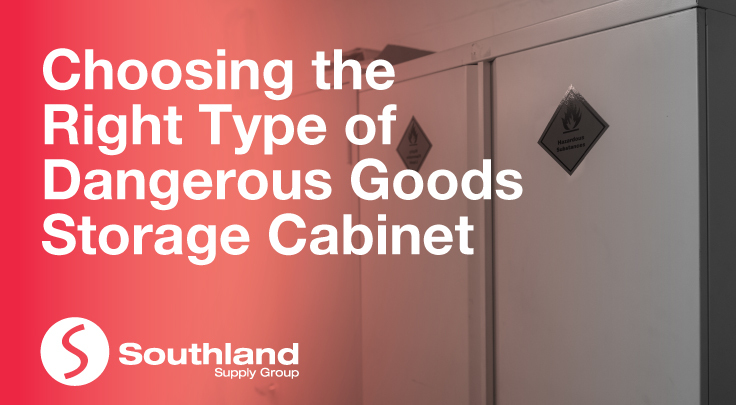
Heavy-duty safety storage cabinets are the first line of defense against fires, spills, and contamination. As their name says, these cabinets ‘safely’ store flammables, corrosives, and hazardous chemicals. In fact, there are many regulations around safe storage. One important governing body is Occupational Safety and Health Administration (OSHA).
Dangerous goods storage cabinets offer a safe, EPA-friendly method for storing potentially hazardous chemicals. This includes pesticides, flammables, corrosives, and combustibles. Rather than leaving these items out in the open and being susceptible to accidents, it’s recommended to keep them in a safety cabinet.
Unlike standard cabinets, professional-grade storage cabinets can withstand pressure, heat, and force. This ensures that they can protect the chemical contents you plan to store inside them.
However, with so many different dangerous goods storage cabinets on the market, how do you know which one to choose? Here are a few considerations:
1. Identify your storage needs
Identify your current and future storage needs. Perform an inventory of all on-site chemicals, including their volumes or quantities. It’s also important to make sure that you cover all material types. From liquid fuels to aerosol can paints, or corrosive acids. This helps identify exactly what types of cabinets best suit your requirements.
2. Determine Where the Cabinet Will Be Used
Outdoor storage buildings work well for bulk storage of flammable liquids, but a storage cabinet can help you keep smaller amounts at a location closer to where you’re using them. You’ll find countertop, wall mount, under-counter and other hazardous chemical storage cabinets in different sizes.
3. Consider Spill Containment feature
One of the most important things to consider is ensuring the storage cabinet has a spill containment sump to catch leaks and seepage from broken or damaged containers. In order to maintain the integrity of the cabinet’s spill containment system, it must be clear from substances and materials. It means that you should always inspect and clean out your spill containment sumps and never use them as a shelving or storage area.
4. Identify the right marking and signage
Another vital consideration is the marking and signage placed on flammable liquids’ storage cabinets. To meet the requirements of AS 1940:2017 (The standard for storage and handling of flammable and combustible liquids), the following signs and markings must be clearly visible when the doors of the flammable cabinet are closed:
- Class 3 Flammable Liquids (Dangerous Goods pictogram at least 250mm nominal length).
- ‘NO SMOKING, NO IGNITION SOURCES WITHIN 3 m’ (Warning placard with letters at least 50mm high).
- Maximum capacity.
- Name and address of the manufacturer.
- Name of the distributor (for imported cabinets).
5. Verify cabinet compliance and approval ratings
It is important to find out if your state requires the work premises to meet specific regulations for flammable liquid storage. In some cases local authorities have jurisdiction over cabinet placement, or how many flammable storage cabinets are allowed in one location.
In addition to this, independent third-party certifications provide confidence a cabinet passes rigorous testing for safe storage. OSHA and NFPA approval are also essential requirements when choosing a cabinet.
Selecting the right dangerous goods storage cabinet to keep your flammables and other hazardous chemicals is a big deal. By considering these points, you’ll be able to make an informed decision and keep your workers safe.
Check out Southland’s assortment of dangerous goods storage cabinets to keep your workplace, team, and environment safe and compliant with Australian Standards. Contact us today if you need advice finding the appropriate system for you, and our highly skilled experts will lead you through the process.
